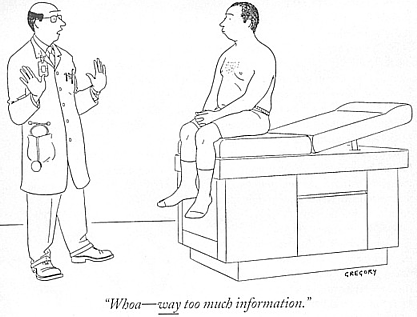|
Cardiac patients in a studyís stress management training were taught to identify and correct anxiety-inducing beliefs with several techniques including: performing muscle relaxation and deep breathing exercises; pausing before taking action; writing down other possible ways of interpreting events; reviewing better ways to respond to stressful situation. Here are five examples of irrational thought patterns that produce anxiety:
Catastrophizing: Exaggerating the harmful effect of something that happens to you. Example: When your boss offers mild criticism, youíre sure youíll be fired.
Personalizing: Seeing yourself as the cause of a negative event. Example: Your child fails a test, and you assume itís because youíre a bad parent.
All-or-Nothing Thinking: Reducing complex situations to absolutes. Example: You know youíre not perfect, so you must be a total loser.
Overgeneralizing: Interpreting one unpleasant situation as part of an endless pattern. Example: When you are turned down for a date, youíre sure everyone will reject you.
Mental filtering: Focusing on the bad while screening out the positive. Example: You obsess about your B history when all your other grades are As.
-- David Tuller, New York Times

|